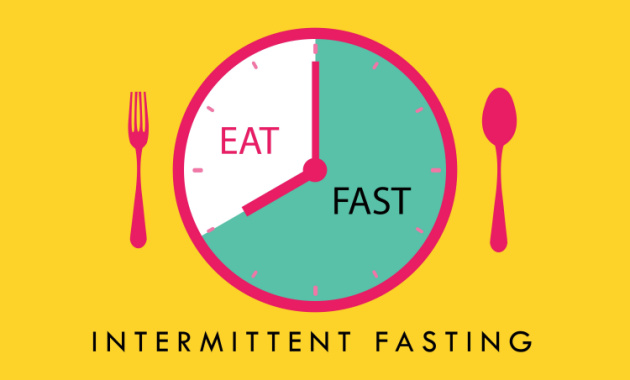✨ Unlock Your Body’s Potential: The Ultimate Guide to Fasting ⏳

Fasting & Wellness
Have you ever considered tapping into your body’s innate ability to heal, rejuvenate, and even shed unwanted weight? Fasting, the age-old practice of voluntarily abstaining from food and sometimes drink, is gaining significant traction for its diverse benefits. But what exactly is fasting, and how can you incorporate it safely and effectively into your lifestyle?
This comprehensive guide from Nutriprior dives deep into the world of fasting, exploring its definition, the compelling reasons behind it, the different types you might encounter, and crucial considerations for your health journey.
🔎 Demystifying Fasting: More Than Just Skipping Meals 🚫
At its core, fasting is a conscious choice to refrain from consuming food, and in some cases, beverages beyond water, for a defined period. This isn’t about random hunger pangs; it’s a deliberate act with a specific timeframe in mind.
Key elements of fasting include:
✅Food Abstinence: The primary aspect, ranging from partial restrictions to complete cessation of food intake.
✅Variable Drink Restrictions: Some fasts allow only water, while others might permit calorie-free options like plain tea or black coffee.
✅Defined Duration: Fasting isn’t haphazard. It follows a schedule, whether it’s the daily windows of intermittent fasting or multi-day periods.
Why do people fast? The motivations are diverse and compelling:
🙏 Spiritual and Religious Practices: Many faiths integrate fasting as a form of devotion, purification, or spiritual discipline.
💪 Seeking Health Benefits: Weight management, improved insulin sensitivity, enhanced metabolic health, and cellular repair (autophagy) are key drivers for health-focused fasting.
✊ Activism and Protest: Historically, fasting has been a powerful tool for non-violent resistance and social change.
🩺 Preparation for Medical Procedures: Doctors often require fasting before certain tests or surgeries to ensure accurate results or patient safety.
🗺️ Navigating the World of Fasting: Discovering the Different Types 📊
The landscape of fasting is varied, offering different approaches to suit individual needs and goals. Here’s a breakdown of common fasting types:
Fasting by Schedule (Intermittent Fasting – IF):
⏱️ Time-Restricted Eating (TRE): Eating within a specific daily window (e.g., 8-hour eating, 16-hour fast – the popular 16/8 method). Variations like 14/10 are also common.
🔄 Alternate-Day Fasting (ADF): Alternating between normal eating days and near-zero calorie days (around 500 calories).
🛑 Eat-Stop-Eat: Involves a full 24-hour fast once or twice a week.
🗓️ The 5:2 Diet: Five days of normal eating with two non-consecutive days of very low-calorie intake (500-600 calories).
🍽️ One Meal A Day (OMAD) / Warrior Diet: Consuming all daily calories in a single meal, typically in the evening, followed by a long fasting period.
🗓️ Periodic Fasting: Longer fasts, lasting 24 hours or more, done less frequently (e.g., monthly or quarterly).
Fasting by Method:
💧 Water Fasting: Consuming only water for a defined period (usually 24-72 hours, requires caution and ideally medical supervision).
🏜️ Dry Fasting: Abstaining from both food and liquids (carries a high risk of dehydration and generally not recommended without medical guidance).
🍹 Juice Fasting: Consuming only fruit and vegetable juices (high sugar content may not be suitable for everyone, especially those managing blood sugar).
✂️ Partial Fasting: Eliminating specific food groups (e.g., dairy-free, sugar-free).
⚡ Electrolyte-Supplemented Water Fasting: Water fasting with the addition of electrolytes to maintain balance.
🐍 Snake Diet: A more extreme approach involving cycles of very low-calorie intake and prolonged water fasts (requires careful research and consideration).
⏳ The Power of Intermittent Fasting: A Closer Look 👀
Intermittent Fasting (IF) isn’t a diet per se, but rather an eating pattern. It’s about when you eat, cycling between periods of eating and voluntary fasting. Think of it as strategically timing your meals to optimize your body’s functions.
How IF Works its Magic:
📉 Calorie Management (Often Unconscious): By limiting your eating window, you naturally tend to consume fewer calories overall, which can lead to weight loss.
⬆️ Boosting Insulin Sensitivity: IF can help your body respond more effectively to insulin, potentially improving blood sugar control.
🛡️ Reducing Inflammation: Research suggests IF may help lower inflammatory markers in the body.
🌟 Potential Disease Protection: Studies hint at IF’s role in protecting against certain chronic diseases, though more human research is needed.
Popular IF Methods:
✅The 16/8 Method: A user-friendly approach with a 16-hour fasting window and an 8-hour eating window.
✅The 5:2 Diet: Flexible, allowing normal eating most of the week.
✅Eat-Stop-Eat: Effective for those who prefer longer, less frequent fasts.

💪 Unlocking the Benefits: How Fasting Impacts Your Health ❤️
Fasting isn’t just about restriction; it triggers powerful physiological changes within your body:
🔥 Supercharging Your Metabolism:
During a fast, your body shifts its primary fuel source. Initially burning glucose (sugar), it eventually taps into stored fat for energy, a process called ketosis. This metabolic switch can lead to:
✔️ Enhanced Fat Burning: Your body becomes more efficient at utilizing fat stores.
✔️ Flexibility Improved Metabolic Flexibility: The ability to seamlessly switch between fuel sources, a hallmark of good metabolic health, can be enhanced.
✔️ Potential Metabolic Boost: Some studies suggest short-term fasting might slightly increase your metabolic rate through hormonal changes.Hormonal Optimization Fasting can influence key metabolic hormones like growth hormone, which supports fat loss and muscle maintenance.
✔️ Achieving Sustainable Weight Loss: Fasting can be a valuable tool for weight management due to:
✔️ Natural Calorie Reduction: Fewer eating opportunities often translate to lower overall calorie intake.
✔️ Targeting Fat Stores: The metabolic shift encourages your body to burn stored fat for fuel.
✔️ Muscle Preservation Potential: Unlike strict calorie-restricted diets, IF may help retain lean muscle mass during weight loss.
✔️ Appetite Regulation: Over time, fasting can influence hunger hormones, potentially leading to reduced cravings.
✔️ Restoring Insulin Balance: Fasting can have a profound positive effect on blood sugar control:
✔️ Lower Insulin Levels: Less frequent eating means your body doesn’t need to produce as much insulin.
✔️ Increased Insulin Sensitivity: Your cells become more responsive to insulin, allowing glucose to enter them more effectively, leading to stable blood sugar levels.
✔️ Reduced Risk of Type 2 Diabetes: Improved insulin sensitivity and blood sugar management can significantly lower the risk of developing type 2 diabetes and may aid in its management (under medical guidance).
⚕️ The Therapeutic Potential: Fasting and Various Diseases 🌱:
Emerging research highlights the potential benefits of fasting in the context of various health conditions:
✅ Type 2 Diabetes and Metabolic Syndrome: Improved insulin sensitivity, lower blood sugar, and better management of blood pressure and cholesterol.
❤️ Cardiovascular Health: Positive impacts on blood pressure, cholesterol, triglycerides, and inflammation.
🧠 Neurodegenerative Diseases: Animal studies suggest potential benefits for brain health, nerve cell regeneration, and protection against conditions like Alzheimer’s and Parkinson’s through reduced inflammation and oxidative stress.
🎗️ Cancer: Early research indicates potential anti-cancer effects by impacting cancer cell growth and enhancing treatment effectiveness, but more human studies are crucial.
🛡️ Inflammatory Conditions: Reduction in inflammatory markers, potentially beneficial for conditions like arthritis and asthma.
🛡️ Immune Function: Some studies suggest fasting can boost the immune system by promoting new immune cell production and reducing inflammation.
Important Note: While these findings are promising, it’s crucial to consult with a healthcare professional before using fasting as a therapeutic intervention for any disease.
🚦 Navigating the Fast: Restrictions and Essential Instructions 📝
Embarking on a fast requires careful consideration and adherence to specific guidelines, which vary depending on the type of fast.
General Restrictions During Fasting:
✔️ Food: The most fundamental restriction, with specifics varying by fast type.
✔️ Caloric Beverages: Sugary drinks, juice (unless it’s a juice fast), milk, and sweetened teas or coffees are typically off-limits.
✔️ Alcohol: Generally avoided during fasting periods.
✔️ Chewing Gum and Mints: Can sometimes stimulate digestion and break a fast.
Essential Instructions and Recommendations:
💧 Stay Hydrated: Drink plenty of water. Unsweetened tea or black coffee may be permitted in some fasts.
👂 Listen to Your Body’s Signals: Pay attention to any discomfort like dizziness or extreme fatigue and stop if necessary.
🪜 Gradual Start and End: Ease into and out of the fasting period to minimize stress on your body.
👨⚕️ Consult Your Healthcare Provider: Crucial if you have underlying health conditions, are pregnant or breastfeeding, or take medications, as fasting can interact with these.
💊 Medication Management: Discuss medication timing with your doctor, as some may need to be taken with food.
🚶♀️ Moderate Activity: Light activity might be okay for shorter fasts, but avoid strenuous exercise. Rest is often recommended for longer fasts.
🧘♀️ Mindful Refeeding: When breaking your fast, start with easily digestible foods in small portions to avoid digestive upset.
⚠️ Understanding the Potential: Side Effects of Fasting 🤕
While often beneficial, fasting can come with potential side effects, especially as your body adapts.
Common Side Effects (Especially Initially or During Longer Fasts):
🤤 Hunger and Cravings: A natural response as your body adjusts.
🤕 Headaches: Can be due to dehydration, low blood sugar, or caffeine withdrawal.
😴 Fatigue and Low Energy: Your body may feel sluggish during the transition.
😵 Dizziness and Lightheadedness: Possibly related to dehydration or low blood sugar.
😠 Irritability and Mood Swings: Blood sugar fluctuations can impact mood.
🚽 Constipation: Reduced food intake and dehydration can affect bowel regularity.
💧 Dehydration: A significant risk if fluid intake isn’t prioritized, especially during water-only fasts.
🤢 Nausea: Some individuals may experience mild nausea initially.
😴 Sleep Disturbances: Difficulty sleeping can occur for some.
💨 Bad Breath: Can result from the breakdown of fat for energy (ketones).

🍎 Fueling Your Fast: Diet Before, During, and After 🍽️
What you eat before, during (if allowed), and especially after your fast plays a vital role in your experience and results.
Diet Before Fasting (The Preparation Phase):
Prepare your body gently to minimize discomfort.
✔️ Several Days Prior: Focus on whole, unprocessed foods (fruits, vegetables, whole grains, lean proteins). Reduce processed foods, sugary drinks, and excessive saturated fats. Gradually limit caffeine and alcohol. Increase water intake. Consider reducing portion sizes.
✔️ The Day Before: Continue with easily digestible whole foods. Avoid heavy, rich meals. Maintain good hydration. A lighter evening meal might be beneficial for longer fasts.
✔️ Diet During Fasting: Strictly depends on the type of fast. (Refer back to the “Types of Fasting” section).
✔️ Diet After Fasting (The Crucial Refeeding Phase): This is critical to avoid digestive issues and allow your body to readjust.
✔️ Immediately After a Short Fast (e.g., IF): Usually, you can resume your normal healthy diet, but avoid overeating initially.
✔️ After Longer Fasts (24 hours or more):
✔️ Start Slowly and Gradually: Your digestive system may be sensitive.
✔️ First 1-2 Meals: Small portions of easily digestible, bland foods like diluted fruit juices (freshly squeezed and diluted), broth (vegetable or bone 🍲), cooked soft vegetables, plain white rice or oatmeal, and small amounts of easily digestible protein (e.g., well-cooked egg 🥚, white fish 🐟).
✔️ Avoid: Large portions, processed foods 🍟, high-fat foods 🥓, spicy foods 🌶️, raw vegetables 🥗, dairy (initially 🥛), and high-fiber foods (initially).
✔️ Gradually Reintroduce Foods: Over the next few days, slowly add back a wider variety, one food group at a time, paying attention to your body’s response.
✔️ Continue Hydrating: Drink plenty of water 💧.
✔️ Listen to Your Body: Don’t rush. If something feels uncomfortable, wait before reintroducing it.
✔️ For Very Long Fasts: Refeeding can take as long as the fast itself and should ideally be guided by a healthcare professional to prevent refeeding syndrome.
General Principles for a Healthy Diet Around Fasting:
🍎 Nutrient Density: Prioritize vitamin- and mineral-rich foods during eating windows.
⚖️ Balanced Macronutrients: Ensure a good balance of carbs, proteins, and healthy fats in your non-fasting periods.
🧘♀️ Mindful Eating: Pay attention to your hunger and fullness cues.
🌱 Ready to Explore the Benefits of Fasting? 🌱
Fasting, when approached thoughtfully and safely, can be a powerful tool to enhance your health and well-being. Remember to listen to your body, do your research, and consult with a healthcare professional, especially if you have any underlying health conditions.
Why Choose NutriPrior for Your Well-being Journey?
At Nutriprior, we understand that achieving optimal well-being is a holistic endeavor. We go beyond simply providing information; we empower you with the knowledge and resources to make informed decisions about your health. Our commitment to providing comprehensive, evidence-based guidance on practices like fasting, coupled with our focus on sustainable and personalized wellness strategies, makes us your trusted partner. We believe in nurturing your body from the inside out, supporting you every step of the way to unlock your full potential for a healthier and more vibrant life. Choose Nutriprior – choose a path to informed, empowered, and lasting well-being.
